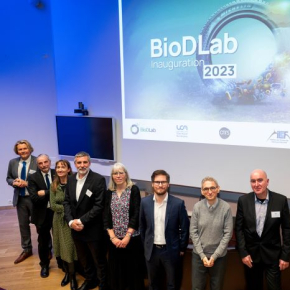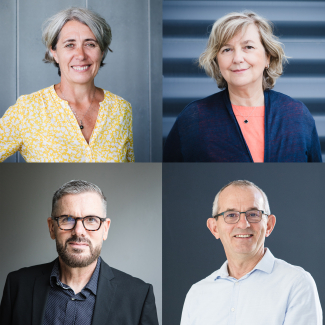
Michelin, the CNRS and l’Université Clermont Auvergne join forces to understand the science of tyre wear particles
|
|
Michelin, the CNRS and l’Université Clermont Auvergne (UCA) inaugurated, on Wednesday, 6 December, the joint research laboratory BioDLab, dedicated to studying the degradation and biodegradation of tyre rubber. Its objectives are to better understand the tyre degradation process stemming from their use, as well as to develop technological solutions for the environmental issues associated with the wear particles that result from contact between road and tyre.
Michelin, the CNRS and l’Université Clermont Auvergne (UCA) inaugurated, on Wednesday, 6 December, the joint research laboratory BioDLab, dedicated to studying the degradation and biodegradation of tyre rubber. Its objectives are to better understand the tyre degradation process stemming from their use, as well as to develop technological solutions for the environmental issues associated with the wear particles that result from contact between road and tyre.
With a duration of 4 years, the joint research laboratory has the mission to develop tools for identification of practical solutions to make wear particles bio-assimilable by the environment.
To ensure driver safety, tyres must first and foremost stick to the road, which leads to erosion and generates wear particles. These particles form a complex mixture for which numerous chemical phenomena remain to be discovered, especially regarding their evolution over time when exposed to sun and water.
At the interface of materials science, chemistry, and microbiology, this new collaboration between the CNRS, Michelin, and UCA seeks to develop methods to assess elastomer degradation, an essential component of tyres, also producing a detailed analysis that sheds light on the mechanisms at work.
More specifically, the research will focus on the coupling between the degradation of diene elastomers or tyre rubber— via a photo- and/or thermochemical process — and their biodegradation either by microorganisms (isolated or in consortium) or by overexpressed enzymes1 . Assessment methods for the various degradation processes will be developed, and a detailed analysis will provide a better grasp of the physicochemical reactions at play.
This collaboration will involve twenty members of the Institute of Chemistry of Clermont-Ferrand (UCA / CNRS), and ten employees from Michelin’s Research and Development Department.
“The CNRS is thrilled about the creation of this new associated research laboratory with Michelin, which offers a structured and lasting framework for jointly exploring the environmental impact of tyres, a challenge in common. Michelin is a primary industrial partner of our organisation, now with 9 active associated research structures, in addition to numerous research collaborations in connection with shared scientific issues,” indicates Jean-Luc Moullet, the CNRS Chief Innovation Officer.
The CNRS encourages the creation of associated research laboratories with enterprises in an effort to advance research and tackle societal challenges at their side. The organisation has over 260 active associated research laboratories.
“We are very happy to collaborate once again with the CNRS and l’Université Clermont Auvergne on an ambitious new field of research. This laboratory on wear particles illustrates our group’s strong commitment.
Considering the environmental impact of its activities is an integral part of Michelin’s strategy. For a number of years, our group has worked to reduce the phenomenon of tyre abrasion, notably through knowledge of the materials but also a design strategy that has historically been oriented toward optimising material use. This policy enabled us to reduce the wear emissions for our tyres by 5% between 2015 and 2020.
Michelin is internationally recognized as a leader in the field of longevity, which was recently confirmed by a test conducted by the General German Automobile Club (ADAC)2 involving one hundred different tyres (study published in March 2022). Finally, the Group has always been favourable toward establishing regulatory abrasion levels for tyres in order to limit wear particle emissions worldwide. As such, it has actively supported the recommendations of the European Commission (Euro 7 standard)”, points out Eric-Philippe Vinesse, the Director of Research and Development, and a member of the Executive Committee.
“BioDlab is the third associated research laboratory created between Michelin and l’Université Clermont Auvergne, and the second involving the Institute of Chemistry of Clermont Ferrand (ICCF). L'Université Clermont Auvergne is very pleased with this new partnership tool, which grew out of an ambitious collaboration policy between our laboratories and the business world, Michelin in particular. This scientific partnership will provide support for producing innovative and sustainable materials, and is therefore wholly in keeping with our scientific strategy, which aims to ‘design sustainable models for living and for production’.” Mathias Bernard, President of UCA.

